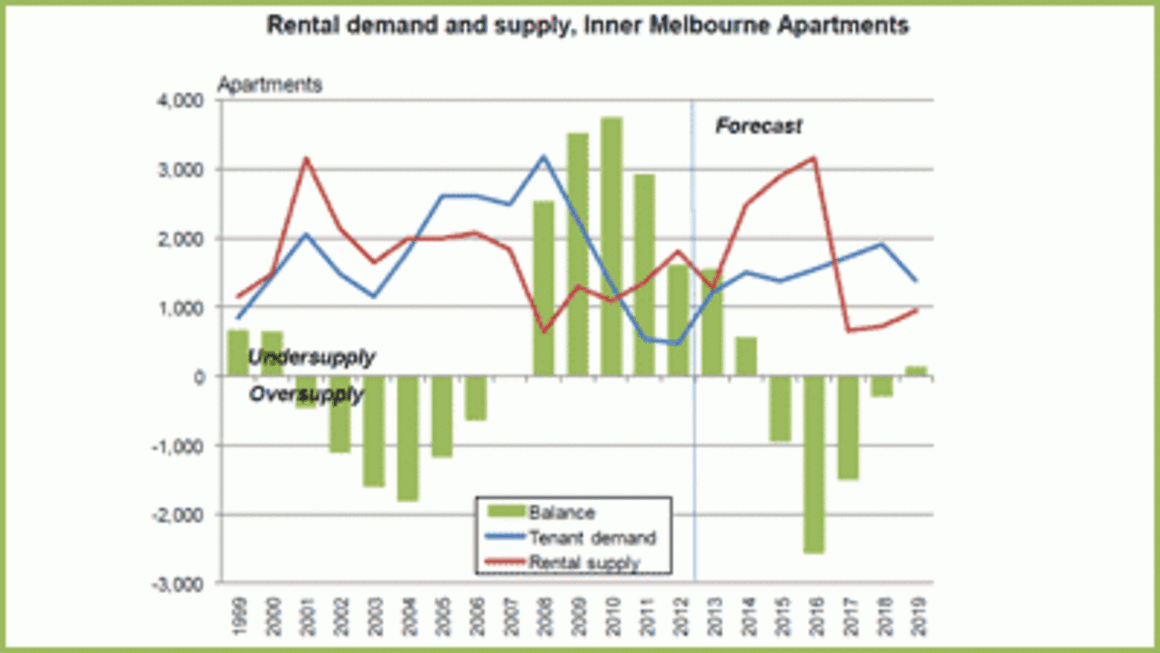Sydney inner-city apartments to deliver better returns than Melbourne until 2019: BIS Shrapnel

The Sydney inner-city apartment market will remain undersupplied until 2019, pushing up rents and delivering rising returns for investors, while Melbourne landlords will struggle due to an oversupply of new apartments, according to BIS Shrapnel.
This is despite more apartments due to be completed in Sydney than in Melbourne between now and 2016.
The most recent apartment construction phase commenced in both cities from 2009-10 following an improved economic outlook and rising rents and yields, but construction was more pronounced in Melbourne, creating the current oversupply.
“The pipeline of construction in inner Melbourne points to record levels of supply, while activity in inner Sydney is also coming to recent highs,” says BIS Shrapnel senior manager Angie Zigomanis.
BIS Shrapnel is forecasting an undersupply of 2,500 apartments in Sydney in 2012.
This will fall over the next four years to an undersupply of 500 apartments as new apartments are completed but will then start rising again from 2017, reaching a shortfall of close to 2,000 apartments in 2018 and 2019.
The forecast is for about 2,000 rental apartments to be completed in inner Sydney in 2013-14 —similar to its 2003-04 peak but below the 1999-2000 peak of 2,500 apartments.
However, this will be insufficient to erode the pent-up rental demand in the inner-Sydney apartment market, and despite further high construction over the following two years, BIS Shrapnel anticipates a modest deficiency of apartments in inner Sydney will still be in place by 2016.
“This environment should continue to support rental growth in inner-Sydney apartments,” says Zigomanis.
“The continued tight rental market and rising rents are expected to support further investor demand and consequently price growth over the next two to three years, particularly if economic growth starts to recover and confidence returns.”
Sydney inner-city apartment rents are forecast to rise by around 5% to 6% per annum over 2012-13 and 2013-14 (compared with 6.7% between 2006 and 2012) before slowing in subsequent years as the deficiency eases with new supply coming on stream
Price growth is expected to be similar, says BIS Shrapnel.
Click to enlargeSource: BIS Shrapnel
Melbourne is forecast to have an undersupply of 1,800 apartments over the next two years but once projects in the pipeline are completed over the next two years the undersupply will more than halve by 2014 before tipping into oversupply by 2015.
In 2016, the surplus of inner-city Melbourne apartments is set to peak at over 2,500 before declining over the next two years and returning to a small undersupply by 2019.
The oversupply of Melbourne apartments is forecast to be driven by an annual rate of 2,800 rental apartment completions from 2013-14 to 2015-16 compared with just 1,800 completions in 2011-12.
Over the past decade Melbourne rental apartment completions have averaged 1,600 per year while tenant demand has remained at 1,500 apartments per year.
Click to enlarge“The record levels of new apartment supply in inner Melbourne over 2013-14 to 2015-16 will push the market into oversupply and vacancy rates will rise,” says Zigomanis.
“The high level of competing stock means that landlords will be unable to command the premiums that are traditionally available for new apartments, while owners of older established apartments will have to discount the asking rent on their apartments in order to compete,” he says.
The lower rents will translate into lower returns for potential investors.
Prices for inner-Melbourne apartments are forecast to remain flat while sales volumes fall until the excess supply is absorbed.
According to BIS Shrapnel, in many instances, owners will experience a decline in prices if they resell.
In its forecasts, BIS Shrapnel breaks down the inner-city population profile in Sydney and Melbourne into three categories:
- Students, with the growth mainly coming from overseas students;
- Young professionals, who are typically employed in white-collar occupations in the CBD or CBD fringe locations; and
- Empty-nesters, such as older singles or couples without children living in the family home.
The first two groups, it says, largely create demand for apartments as tenants, while empty-nesters are typically owner-occupiers and will therefore occupy the apartment they have purchased.
“Apartment rent demand from young professionals experienced a setback during the GFC as employment in the financial sector declined. While this rebounded briefly as the recovery came through, growth has again slowed in line with the economy,” says Zigomanis.
“Student demand has also weakened, although most of the reduction in overseas student numbers has taken place in the vocational education sector compared to the university sector, and with major university institutions located close to the Sydney and Melbourne CBDs, the softening in student demand has been less pronounced. As a result, tenant demand has softened.”

